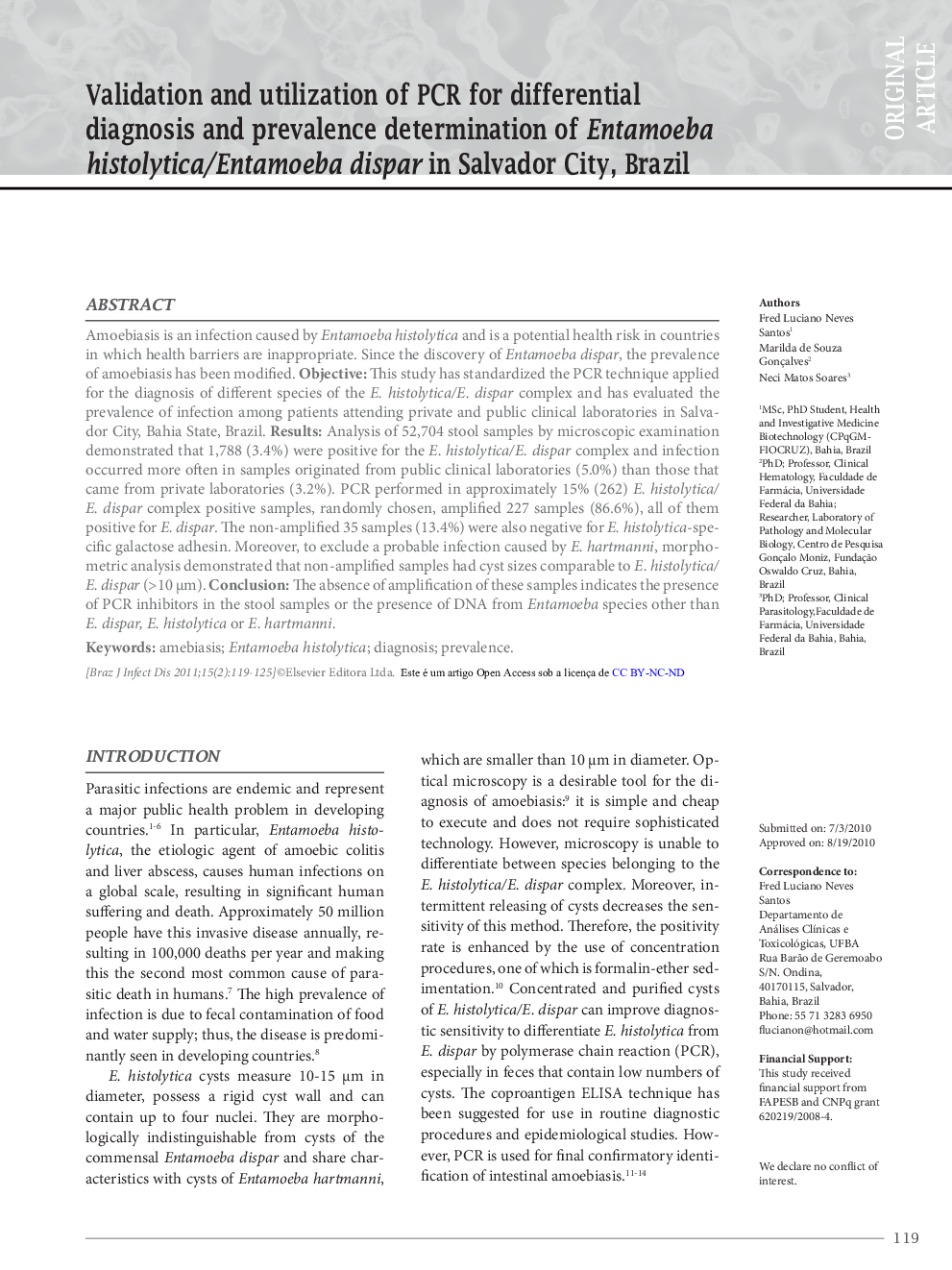| Article ID | Journal | Published Year | Pages | File Type |
|---|---|---|---|---|
| 3344585 | The Brazilian Journal of Infectious Diseases | 2011 | 7 Pages |
Amoebiasis is an infection caused by Entamoeba histolytica and is a potential health risk in countries in which health barriers are inappropriate. Since the discovery of Entamoeba dispar, the prevalence of amoebiasis has been modified.ObjectiveThis study has standardized the PCR technique applied for the diagnosis of different species of the E. histolytica/E. dispar complex and has evaluated the prevalence of infection among patients attending private and public clinical laboratories in Salvador City, Bahia State, Brazil.ResultsAnalysis of 52,704 stool samples by microscopic examination demonstrated that 1,788 (3.4%) were positive for the E. histolytica/E. dispar complex and infection occurred more often in samples originated from public clinical laboratories (5.0%) than those that came from private laboratories (3.2%). PCR performed in approximately 15% (262) E. histolytica/E. dispar complex positive samples, randomly chosen, amplified 227 samples (86.6%), all of them positive for E. dispar. The non-amplified 35 samples (13.4%) were also negative for E. histolytica-specific galactose adhesin. Moreover, to exclude a probable infection caused by E. hartmanni, morphometric analysis demonstrated that non-amplified samples had cyst sizes comparable to E. histolytica/ E. dispar ( > 10 μm).ConclusionThe absence of amplification of these samples indicates the presence of PCR inhibitors in the stool samples or the presence of DNA from Entamoeba species other than E. dispar, E. histolytica or E. hartmanni.
